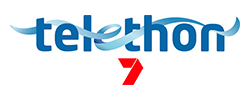Search

News & Events
HBF Stadium Open DayHBF Stadium & HBF Arena Open Days - Sunday 20 & 27 July The Kids researchers will be presenting to the public as part of the two open days.

News & Events
Telethon WeekendThe Kids Research Institute Australia will have a stand at the beneficiary expo during this year's Telethon weekend running October 25 and 26.

News & Events
$20 million partnership a win for WA kidsIn the largest donation in Telethon history, BHP Billiton has committed $20 million over the next five years to The Kids Research Institute Australia

News & Events
Rockingham to trial innovative pregnancy care programRockingham women are being urged to take part in a program trial aimed at guiding and supporting mums-to-be through a safe and healthy pregnancy.
News & Events
Dad’s Dream Inspires Global Cancer FightThe Global Symposium on Childhood Brain Tumours is bringing the world's premier childhood brain tumour researchers and scientists together in Perth.
News & Events
Huge hospital burden for kids with intellectual disabilitiesNew research from the Telethon Institute has shown that children with an intellectual disability are up to 10x more likely to be admitted to hospital.
News & Events
Greater justice for people with FASDA study of the Western Australian justice system has identified that 85% of staff say responding to the needs of people with FASD is an issue in their work.
News & Events
New research calls for re-introduction of sugar intake monitoringA new study by the Telethon Institute for Child Health Research has called for better collection of data on food sugar levels as obesity levels continue to rise
News & Events
Urgent action needed to improve the mental health and save the lives of Australian doctors and medical studentsA world-first survey of Australian doctors and medical students has shown they are burnt-out and likely to have poorer mental health than the general community.
News & Events
Vitamin D levels linked to depression in young menResearch from Perth's The Kids for Child Health Research shows that symptoms of depression in young men may be associated with low vitamin D levels.
